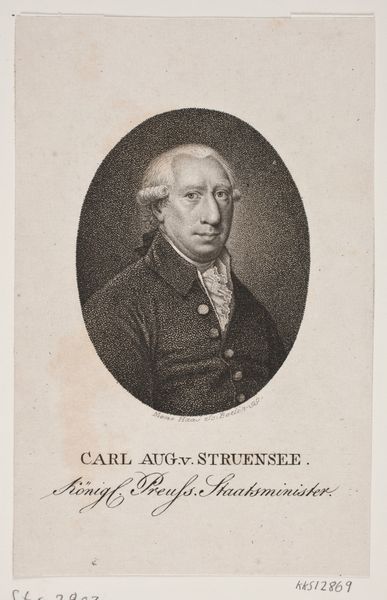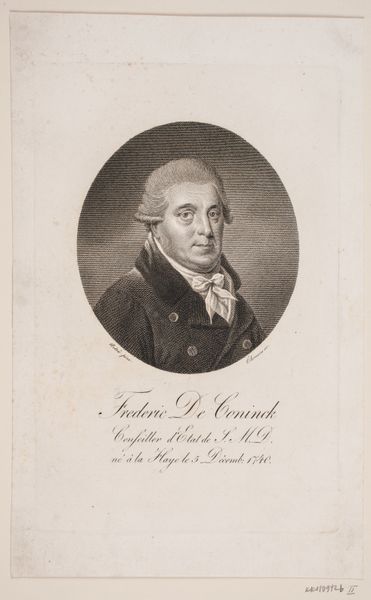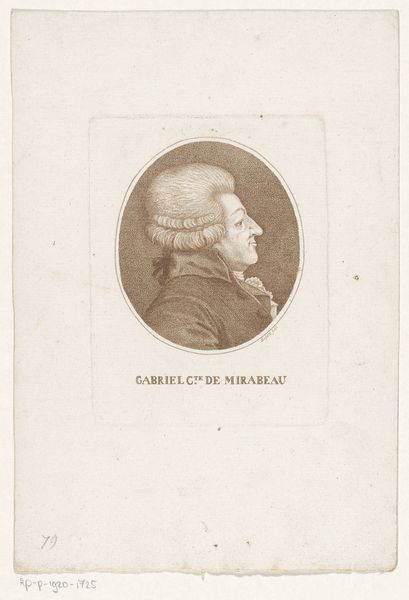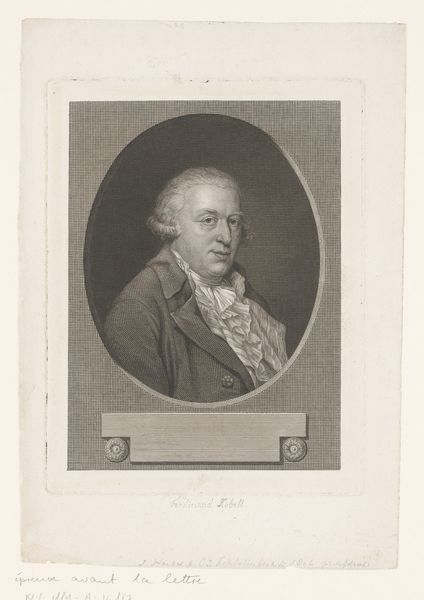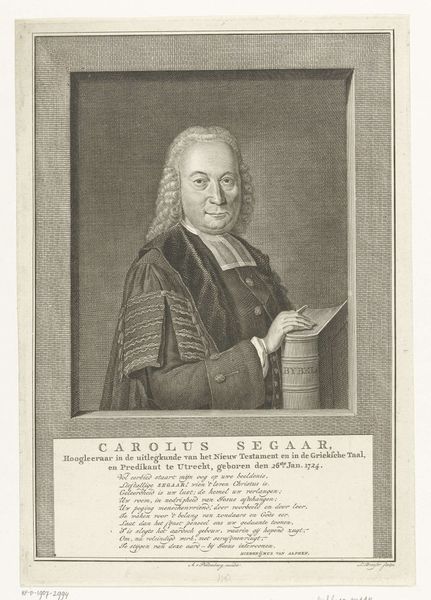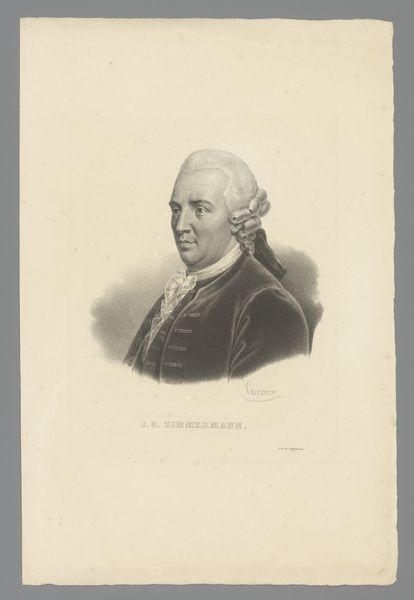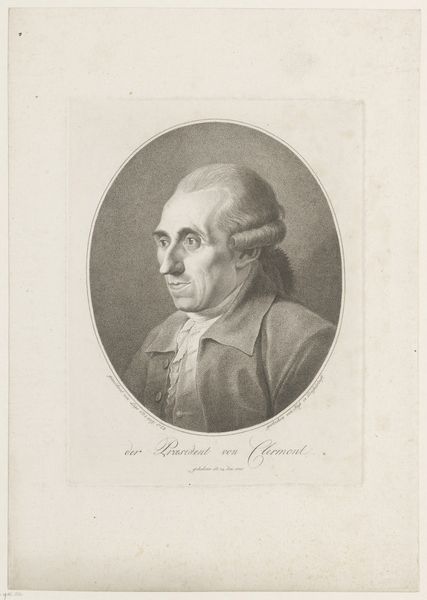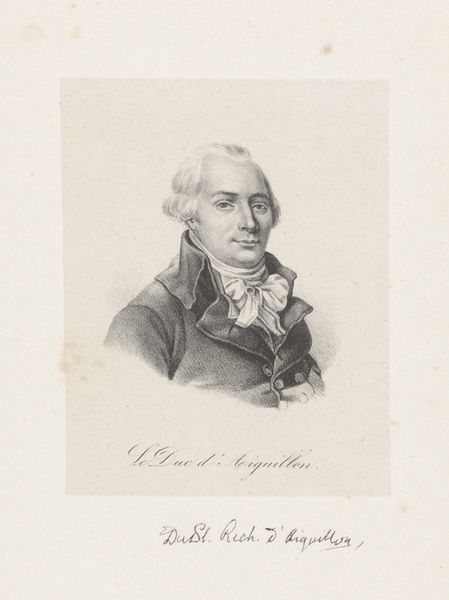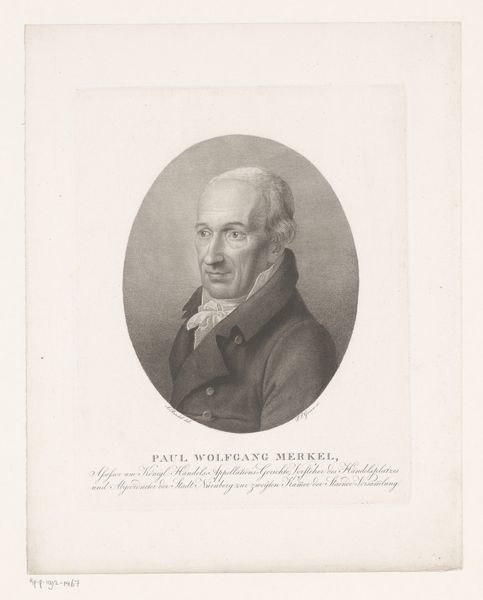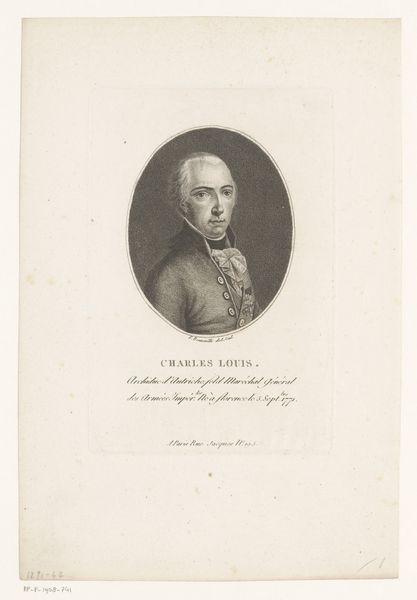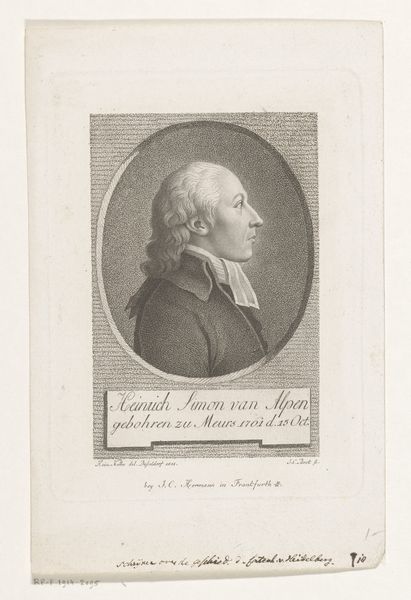
Dimensions: height 225 mm, width 146 mm
Copyright: Rijks Museum: Open Domain
Curator: Here, we see Johann Elias Haid’s engraving of Carl Caspar Siebold. Created sometime between 1749 and 1807, this print captures Siebold in profile. It seems so indicative of its era, a study in stoicism and…power. Editor: Yes, the profile view immediately presents this man as a figure of authority. Notice how the circle around his portrait emphasizes that sense of self-containment, of being untouchable in a way? There’s a visual vocabulary here that links directly to established archetypes of leadership and respect. It almost feels like looking at a coin depicting a ruler, the effect is potent and creates an air of solemnity. Curator: Absolutely. That rigid composure was socially mandated for figures in positions of power during that period. The clothing, hairstyle – they are as much a uniform proclaiming status as they are aesthetic choices. Thinking about status and access – portraiture like this was absolutely about class, gender, and power dynamics. Who gets represented, how, and why? It reinforces existing social structures but perhaps also provided access to these elite circles for the artist himself. Editor: Exactly. His face almost has the quality of a Roman bust. He could be a senator, as well as a leading German Surgeon, which we know Siebold was. Look at how much detail Haid puts into rendering the lace collar. The light seems to catch and illuminate the fabric which creates this incredible surface complexity; Haid used line and tone expertly. What do you make of the text below the image? Curator: That's an interesting dimension. The inscription 'Chirurgus inter Germanos princeps' declares Siebold a leading surgeon among German princes, cementing his position and significance within society, yet it's written in Latin. Latin had remained the lingua franca in science and medicine, but by this point the vernacular had been on the ascent for centuries. So there’s something almost reactionary about invoking this dead language to bolster the legitimacy of the sitter! The choice highlights Siebold's erudition and underscores his authority. Editor: It’s so interesting how this piece makes connections for me – the weight of visual tradition in shaping our understanding of power. Considering all the threads we have discussed, it adds depth to this historical portrait. Curator: Indeed. It makes me rethink the impact of historical forces in the supposedly objective realm of scientific advancement, which is precisely what I try to bring to light.
Comments
No comments
Be the first to comment and join the conversation on the ultimate creative platform.
